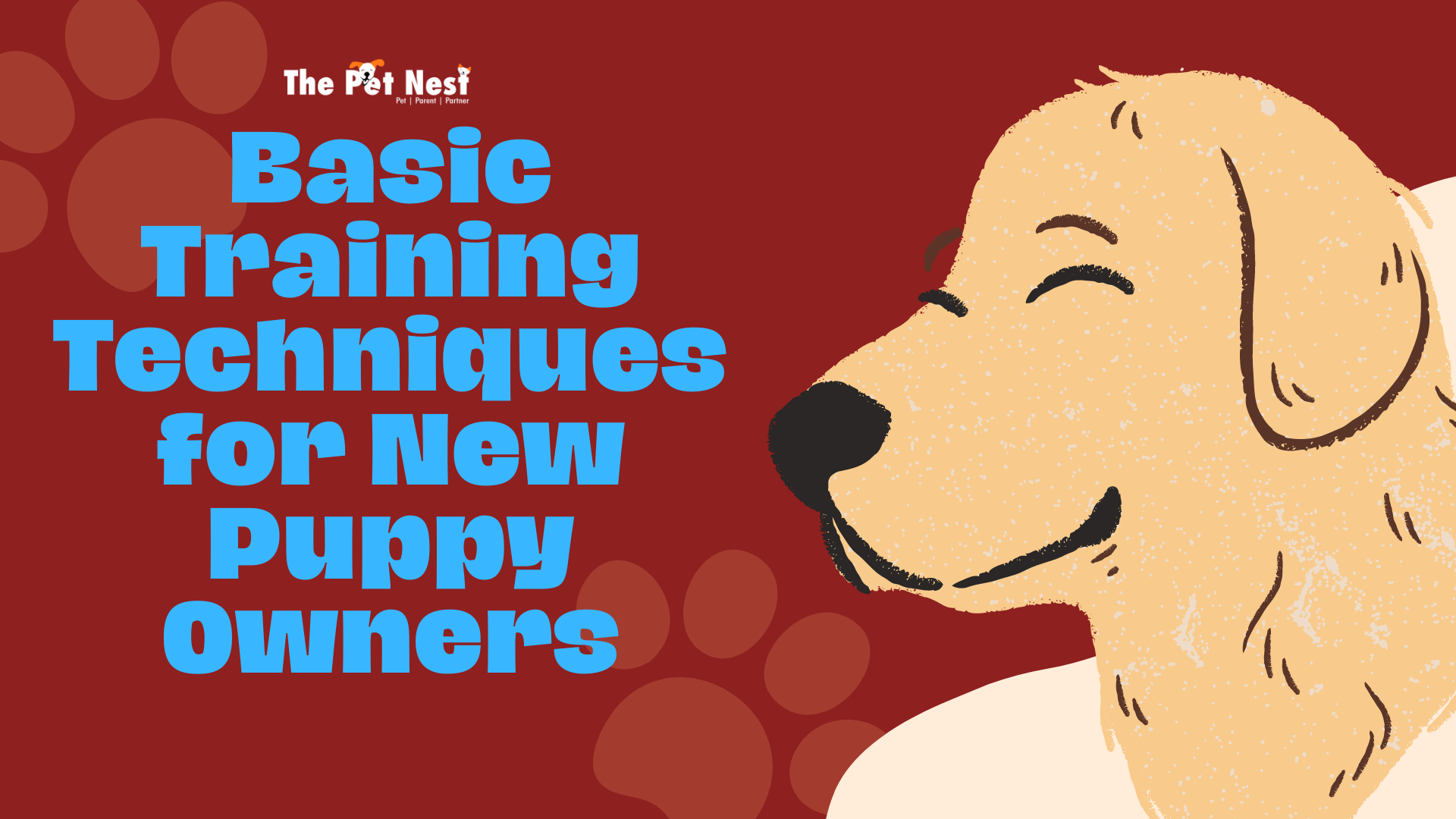Basic Training Techniques for New Puppy Owners
Welcoming a new puppy into your home is one of life's greatest joys. That tiny bundle of energy with those irresistible eyes is ready to bring endless fun and companionship. However, along with the cuteness, there's a bit of a challenge — training your puppy to grow into a well-behaved and happy dog.
The key to successful puppy training lies in patience, consistency, and using positive reinforcement. Whether you're a first-time pet parent or an experienced dog lover, this guide will walk you through the basics of puppy training to ensure your new furry friend develops good habits right from the start.
1. Establish a Routine
Puppies thrive on routine. They learn faster when there’s a predictable schedule for meals, potty breaks, playtime, and training sessions. Establishing a routine early helps your puppy understand what to expect and reduces anxiety.
- Feeding: Stick to a consistent feeding schedule, ideally 2-3 times a day depending on the breed and age of your puppy.
- Potty Breaks: Take your puppy outside first thing in the morning, after meals, during playtime, and right before bedtime.
This routine will help your puppy settle in faster and start learning the essentials of housebreaking.
2. Crate Training
Crate training provides a safe space for your puppy and assists with potty training. Many dogs see their crate as a den — a cozy, safe spot where they can relax. Start by introducing your puppy to the crate slowly, making it a positive experience by using treats, toys, and comfort.
- Use the crate for naps and overnight sleeping: Puppies typically won’t soil their sleeping area, making it easier to house train them.
- Limit crate time: Puppies shouldn’t spend too long in the crate. A good rule is one hour for each month of age (e.g., 2 hours for a 2-month-old puppy).
3. Potty Training
Potty training requires patience, but it’s one of the most important lessons. Consistency is key!
- Take your puppy out frequently: Puppies have small bladders and need to relieve themselves often, especially after meals and naps.
- Choose a specific potty spot: Take your puppy to the same outdoor location each time to reinforce the idea of where they should go.
- Praise and reward: After your puppy does their business outside, reward them with a treat and praise. This positive reinforcement encourages them to repeat the behavior.
4. Basic Commands
Teaching basic commands like “sit,” “stay,” “come,” and “leave it” is crucial for safety and communication. Puppies are eager to learn, especially when treats are involved!
- Start with “sit”: Hold a treat in front of your puppy’s nose and slowly raise it above their head. As their head follows the treat, their bottom will naturally lower. Once they sit, say “sit” and give them the treat.
- Practice “stay” and “come”: Have your puppy sit, then take a few steps back while holding up your hand (as if saying “stop”) and say “stay.” Wait a moment, then say “come” with excitement and reward them when they follow.
- “Leave it”: When your puppy is interested in something they shouldn’t have (like a shoe), say “leave it” firmly and offer a toy or treat as a distraction. Reward them when they comply.
5. Socialization
Early socialization is key to raising a well-adjusted puppy. Exposing your puppy to different people, places, sounds, and other dogs helps reduce fear and anxiety as they grow older.
- Meet new people: Have friends and family interact with your puppy, offering treats and calm attention.
- Take puppy out: Bring your puppy to safe, pet-friendly environments like parks, cafes, or even walks around the neighborhood. The goal is to expose them to various sights, sounds, and smells.
Socialization helps puppies become confident and less fearful in new situations, which leads to a happier and better-behaved dog in the long run.
6. Bite Inhibition
Puppies use their mouths to explore the world, but they need to learn that biting people is not acceptable. Teaching bite inhibition early will prevent problems as your puppy grows.
- Say “ouch”: When your puppy bites too hard, let out a high-pitched “ouch” and stop playing for a moment. This mimics how puppies teach each other boundaries during play.
- Offer chew toys: Redirect your puppy’s biting behavior to a chew toy or bone. Puppies need to chew, especially during teething.
7. Positive Reinforcement
One of the most effective training techniques is positive reinforcement. This means rewarding good behavior rather than punishing bad behavior.
- Use treats, praise, and affection: When your puppy listens to a command, goes potty in the right spot, or behaves well, immediately reward them. This strengthens the association between good behavior and positive outcomes.
- Be consistent: Make sure everyone in the household uses the same commands and reward system to avoid confusion.
8. Patience and Consistency
Puppy training takes time. Your little one is learning about the world and trying to understand what you want from them. There will be accidents, and they may not always follow commands perfectly. Stay patient and remain consistent with your training efforts.
Conclusion
Training your puppy can be a fun and rewarding experience, but it does require patience and dedication. By starting early with crate training, housebreaking, basic commands, and socialization, you’ll set the foundation for a well-behaved adult dog. Book Dog Training Session
Remember, positive reinforcement is your best friend when training your puppy. With time, love, and consistency, your puppy will grow into a happy, obedient, and loyal companion who brings joy to your life for years to come. So, gear up with treats, toys, and lots of patience — you’ve got this!




Comments
New Comment